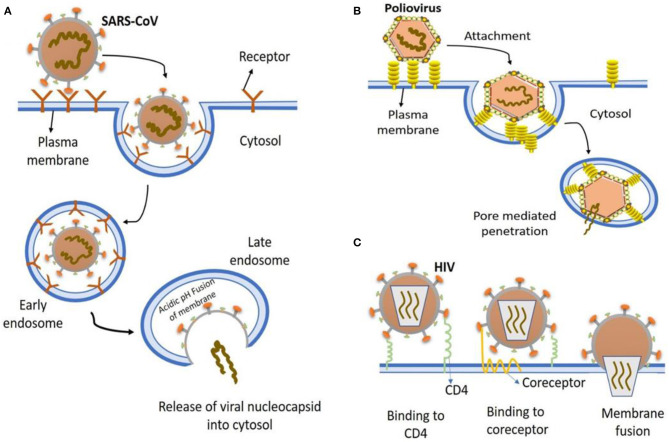Figure 1.
The most common entry to host cells mechanisms of human viruses. (A) SARS-CoV entry. Key points are, virion attachment to receptor; virion internalization by endocytosis; lowering the pH (5.5) of the endocytic vacuole leading to drastic reconfiguration of the viral attachment protein; insertion into the vacuolar membrane; fusion of vacuolar membranes and the viral; viral nucleocapsid release into the cytosol. (B) Poliovirus entry. virion binding to cell surface receptors, endocytosed and ultimately delivered to endosomes (low pH); conformational changes in viral capsid due to low pH environment result in exposure of hydrophobic domains that insert into the endosomal membrane, producing a pore for viral genome exit and entry into cytoplasm. (C) HIV entry. Virion attaches to various attachment factor on cell surface, such as DC-SIGN. The attachment of viral envelope glycoprotein to CD4 alters the structure of envelope glycoprotein, which then induces the second receptor binding domain exposure resulting in the engagement of CCR5 or CXCR4 coreceptors, that in turn causes the viral fusion with the cell membrane.

